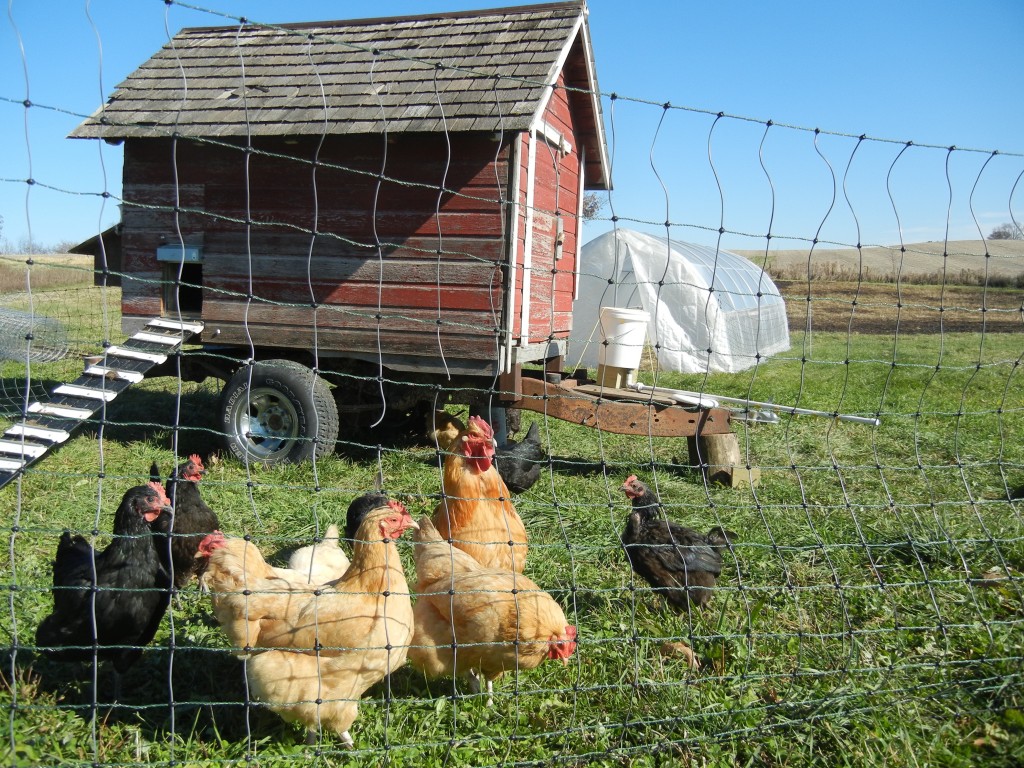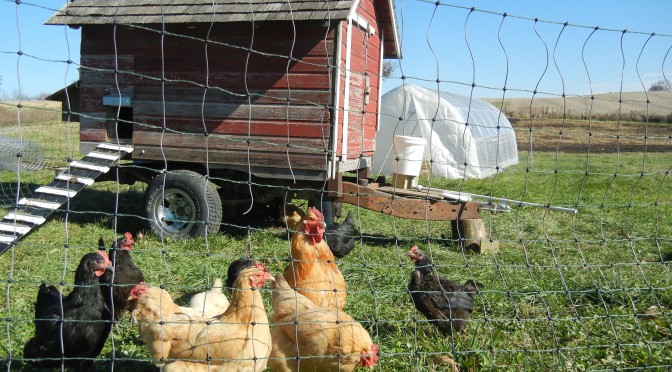Ultimately, we found that over the long-term, prescribed fires significantly reduced tick populations regardless of burn interval, host abundance, vegetation, or climate, with a 98% reduction in ticks observed in sites that were managed with any type of burning. Interestingly, we did not observe the recovery of tick populations after burns that previous studies reported. Instead, ticks simply were not present (or were present at very low numbers) in these sites for the duration of our study.
From SCWDS BRIEFS, October 2015, Vol. 31, No. 3 http://vet.uga.edu/population_health_files/2015_OCT_SCWDS_Briefs.pdf
Author: Brad Crawford
Fresh Pastures
The laying hens now make their home in rural Winneshiek County. With their newly remodeled “mobile home” and portable fencing, the hens can now be continually rotated to fresh pastures (they love the clover).
The Chicken Coop
The coop was originally built in the early 1900s and ended up being passed down to me through my good friend Reed. Reed constructed the mobile foundation, and helped tow the coop to our farm. Recent additions to the coop include a set of external nest boxes and an automatic door. The door opens shortly after sunrise and closes shortly after sunset.

